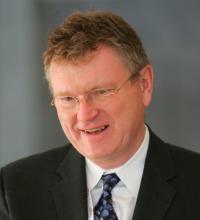DANA POINT, CALIF. – The rate of granuloma formation following use of Artefill for the correction of nasolabial folds stands at 0.59%, interim results from a 5-year study have shown.
Dr. Christopher B. Zachary presented 36-month results from the prospective study at the SDEF Summit in Aesthetic Medicine. The study was required by the Food and Drug Administration and is the largest and longest prospective clinical study to date for dermal fillers in the United States and in the European Union, according to Dr. Zachary.
The purpose of the study is to assess the safety of Artefill (Suneva Medical) in 1,008 patients, based on the incidence of anticipated and unanticipated adverse events and serious adverse events, the incidence of granuloma formation, and subjects' assessment of satisfaction.
Patients were treated for the correction of nasolabial folds at baseline. They received two touch-up treatments if needed, said Dr. Zachary, professor and chair of the department of dermatology at the University of California, Irvine. The second clinic visit consisted of a clinical evaluation and photos of the treated site 3 months after the last treatment.
Patients filled out questionnaires at 6, 12, and 18 months and at 2 and 3 years, and will again do so at years 4 and 5. Adverse events were reported to the site for investigation. Final visits are scheduled for 5 years after the last Artefill treatment.
The mean age of the 1,008 patients was 54 years, 89% were female, and 88% were white. Most subjects (975) are still in the trial, while 29 have been lost to follow-up or withdrew consent for personal reasons, and four non–treatment-related deaths have occurred.
<a href="http://polldaddy.com/poll/5225431/" external="1">Have you used Artefill to treat nasolabial folds?</a>A total of 114 adverse events deemed device related have occurred to date, for a rate of 11%. These include local complications such as lumpiness, swelling, and redness. In addition, 11 lesions have been identified and biopsied: 4 were viewed as unremarkable at biopsy, 1 was categorized as a foreign body reaction consistent with implant material, and 6 were granulomas, for a rate of 0.59%. Five granulomas resolved completely and one is responding well to treatment.
"You might say that the 0.59% incidence of granulomas is a bit high when you consider that the worldwide reported incidence of granulomas after using Artefill is 0.04%," said Dr. Zachary. "If the FDA required an intense 5-year study of all the commonly used filler products, where every adverse event [AE] was reported, then you would expect the overall AE incidence to be significantly higher. So what is the real incidence of AEs in fillers, and does reliance on voluntary reporting give us misleading results?"
Patient satisfaction scores have remained high over time. For example, at 6 months, 81% reported being "very satisfied" or "satisfied" with the cosmetic results, compared with 79% at 18 months, and 78% at 24 months.
"I'm not up here promoting the product, but I do think Artefill is very safe," Dr. Zachary said. "In practice, this study demonstrates that the product is probably just as safe as hyaluronic acids. Some of my colleagues hate to hear this, and I am not really a fan of permanent fillers, but if we determine that a company needs to perform a comprehensive 5-year safety study, then we need to sit up and take notice of the results. To do otherwise would be ignorant."
Dr. Zachary disclosed that he has received research support, discounts on devices, and honoraria from numerous laser and device companies, including Suneva Medical. He is a member of Suneva’s scientific advisory board.
SDEF and this news organization are owned by Elsevier.


